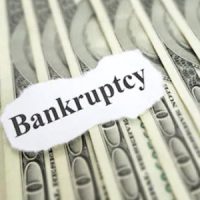What Can You Do about Secured Debts?

Bankruptcy does an excellent job of wiping out certain unsecured debts, such as credit card debt, medical debt, and some personal loans. Unfortunately, bankruptcy can’t eliminate a secured loan, such as your home mortgage or a car loan. What options does a debtor have if they are struggling with this type of secured debt? Below we look at the most common options.
Turn Over the Collateral
This might not be an ideal option, but it is often the only one that makes sense. Instead of fighting a foreclosure action, you simply turn over the collateral to your debtor.
Reaffirm the Debt
You might also want to keep paying the secured loan. There is a process in bankruptcy called reaffirmation. Some of our clients choose to reaffirm loans in bankruptcy, such as their car loans.
You might find that once you wipe out unsecured debts, you have freed up money each month which you can then contribute to your secured debts. Some clients can afford their monthly payments now that they no longer must worry about credit card or medical debt.
You should review your budget with your attorney to see if you can continue to pay secured loans after filing for bankruptcy. If your budget is still too stressed, then turning over the collateral is often the better option than continuing to struggle each month.
Negotiate with Your Creditor
Another option is to check whether you can adjust the terms of your loan with your lender. For example, you might want a lower interest rate or an extended term, which can reduce monthly payments. You can call your lender and explain your situation.
Be warned, however: creditors of secured debt have less incentive to negotiate than a creditor whose loans are unsecured. They can always foreclose on the property instead of helping you keep up with your payments.
File for Chapter 13 Bankruptcy & Reduce the Amount of Principal
One unique feature of a Chapter 13 bankruptcy is called a “cramdown,” which many of our clients have successfully used on their vehicles or investment property. Essentially, the amount of debt owed will be reduced to the market value of the asset. So if your car is only worth $5,000 but your car loan is $7,000, the cramdown will reduce the amount you owe to roughly $5,000. The other $2,000 is lumped in with other unsecured debts, like credit card debt, which you will only pay a fraction of (if anything).
Unfortunately, debtors cannot use the cramdown on their residence. But it is often an option for other secured loans, which will reduce the amount they owe.
Be aware, however, that a Chapter 13 is a lengthy process. Our clients need 3-5 years of regular payments before they can receive a discharge. Discuss with your lawyer whether this is a better option than simply turning over the collateral and moving on.
Discuss what to Do with Secured Debts with One of Our Attorneys
Nowack & Olson is a leading South Florida bankruptcy firm with thousands of happy clients. Our Plantation bankruptcy lawyers can identify the best way to tackle debt and keep secured property. Contact us today to schedule a free consultation.
https://www.floridabankruptcynow.com/insight-on-bankruptcy-from-a-judges-perspective/
